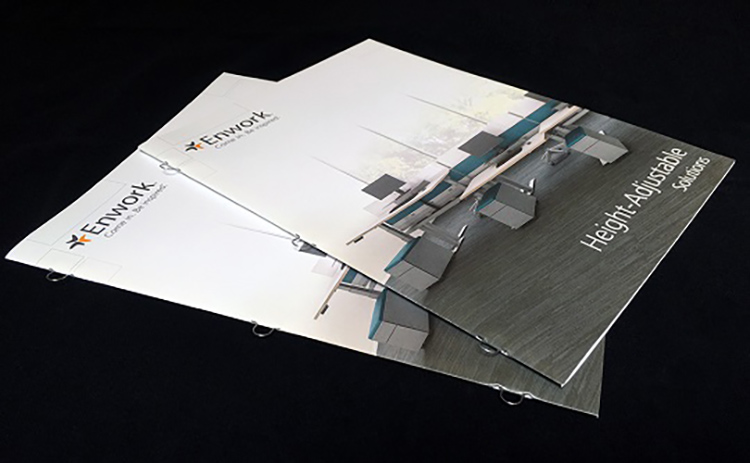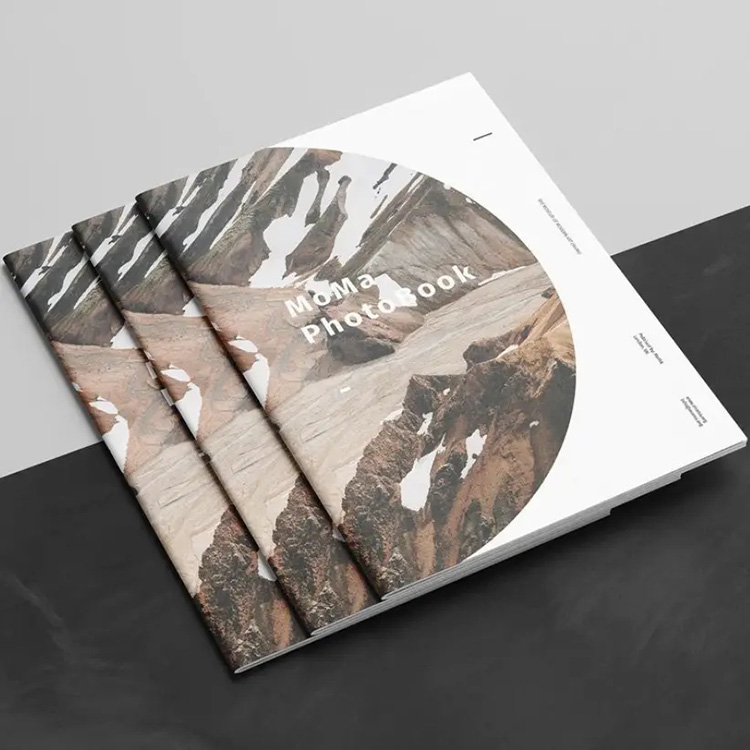The world of bookbinding is vast and diverse, with a myriad of techniques and styles to choose from. One such technique that has become increasingly popular in recent years is the loop stitch binding. This method of bookbinding offers a unique and stylish way to bind booklets, catalogues, and magazines. The process involves stitching the pages together along the spine using a loop stitch, resulting in a sturdy and durable binding that also allows the book to lay flat when opened.
The loop stitch binding method is not only aesthetically pleasing, but also highly functional. It offers an alternative to the traditional saddle stitch binding, and is particularly well-suited to works that need to be both portable and easily accessible. The loop stitch binding is also a great option for those who want to add a more personal touch to their books, as it allows for a high level of customization.
Loop stitch binding is a practical and aesthetically pleasing option that is ideal for a wide range of applications. Whether you're creating a personal journal, a business catalogue, or a professional portfolio, the loop stitch binding method can provide you with a high-quality, durable, and stylish final product.
What is loop stitch binding

Loop stitch binding, also known as loop staple binding, is a method of bookbinding that uses loops of wire to bind the pages of a book together. The loops are inserted through holes punched in the pages, and then secured to the spine of the book. This binding method is particularly popular for documents that need to be inserted into ring binders or lever arch files. As the loops can easily be slid onto the rings of the binder.
Unlike saddle stitch binding, which uses staples to bind the pages together, loop stitch binding uses wire loops. These loops are more robust and durable than staples, and they also provide a more elegant and professional finish. The loop stitch binding method is versatile and adaptable, and can be used to bind a wide range of documents, from brochures and catalogues to reports and manuals.
The advantage of loop stitch binding
There are several advantages to using loop stitch binding for your book printing needs. Firstly, loop stitch binding is extremely durable. The wire loops used in this binding method are robust and can withstand a lot of wear and tear. This makes loop stitch binding an excellent choice for books that will be heavily used or transported frequently.
Secondly, loop stitch binding allows the book to lay completely flat when opened. This is a major advantage for books that will be read frequently or referred to often, as it makes them much easier to use. It also makes loop stitch binding a great choice for portfolios or catalogues. As it allows the reader to view the entire spread without having to hold the book open.
Finally, loop stitch binding is a versatile option that can be customized to suit your specific needs. Whether you need a book that can fit into a ring binder, a catalogue that can be easily referred to, or a personal journal that reflects your individual style, loop stitch binding can provide a solution that meets your needs.
What is a loop stitch used for?
The loop stitch is a versatile binding method that can be used for a wide range of applications. It is commonly used in the printing of catalogues, manuals, brochures, and reports, where it provides a sturdy and durable binding solution that also allows the document to lay flat when open.
Loop stitch binding is also an excellent choice for creating custom loop stitch books. These books can be customized to suit your individual needs, and can include features such as personalized covers, different paper types, and a variety of binding options. Whether you're creating a personal journal, a professional portfolio, or a unique gift for a loved one, a custom loop stitch book can provide a high-quality, stylish, and unique final product.
In addition to these applications, loop stitch binding is also a popular option for loop stitch booklet printing. These booklets can be used for a variety of purposes, from promotional materials to instructional guides, and offer a durable and professional-looking alternative to traditional stapled booklets.
How we do loop stitch binding?
The process of loop stitch binding is relatively straightforward, but requires a high level of precision and attention to detail. Firstly, the pages of the book are collated and arranged in the correct order. Next, holes are punched along the spine of the book where the wire loops will be inserted.
The wire loops are then threaded through the holes and secured to the spine of the book. This is done using a special machine, which ensures that the loops are inserted accurately and securely. The loops are then trimmed and closed, securing the pages of the book together.
The final step in the process is to trim the edges of the book to ensure a clean, professional finish. The result is a high-quality, durable, and stylish loop stitch bound book that can withstand a lot of wear and tear.
Loop stitch vs saddle stitch: how to differ

Loop stitch binding and saddle stitch binding are two popular methods of bookbinding, but they differ in several key ways. Firstly, saddle stitch binding uses staples to bind the pages together, while loop stitch binding uses wire loops. This not only affects the appearance of the final product, but also its durability and functionality.
In terms of durability, loop stitch binding is generally more robust than saddle stitch binding. The wire loops used in loop stitch binding are stronger and more durable than staples, making them more suitable for books that will be used frequently or transported often.
Functionally, loop stitch binding also has several advantages over saddle stitch binding. One of the main advantages is that loop stitch bound books can lay flat when open, making them easier to read and use. Additionally, loop stitch binding can be used to bind books that need to be inserted into ring binders or lever arch files, something that is not possible with saddle stitch binding.
In conclusion, while both loop stitch and saddle stitch binding have their merits, loop stitch binding offers a more durable, functional, and stylish solution for your bookbinding needs. Whether you're looking for a high-quality binding solution for your business catalogues, a stylish binding method for your personal journals, or a durable binding option for your professional portfolios, loop stitch binding offers a versatile and customizable solution that can meet your needs.
More binding ways, please visit binding methods page.

